
AXIS a line through the center of an object, around which it rotates when spinning |

AXIS a line through the center of an object, around which it rotates when spinning |

BAY part of the sea or lake extending into land |

COMET a body that orbits around the sun |
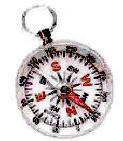
COMPASS an instrument for showing directions, consisting of a needle that points to the magnetic north pole, which is near the north pole |

CONSTELLATION a grouping of stars named for a mythical figure, animal or inanimate object, there are 88 constellations |

CRATER a depression |

DAY the time in which the sun is above the horizon |

EARTH the planet on which we live |
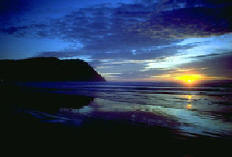
EAST the point on the horizon where the sun rises |

GALAXY
|

GEOGRAPHY the scientific study of the earth's surface features |

GLOBE an object shaped like a ball with a map of the earth on it |

LIGHT electromagnetic radiation visible to the eye |

MAP a representation of the earth's surface |

METEORITE a fallen meteor, a fragment of rock or metal reaching earth's surface from outer space |

MOON a satellite that orbits a planet, due to gravitational attraction |

MOUNTAIN a mass of land that rises to a great height , especially of over a thousand feet |

NEBULA a gas or dust cloud in space |

NIGHT the dark hours between sunset and sunrise |

NORTH to the left of a person standing east where the sun rises |

PENINSULA piece of land almost surrounded by water, or extending far out into the water |
PLAIN a flat stretch of land |

PLANET a "wanderer" one in nine bodies of orbit around the sun |
| PLASMA
a state of matter, highly ionized |
| REFLECT
to throw back |
RELIEF
ease given by reduction or removal of pain or anxiety or burden |
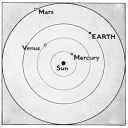
REVOLVE to turn or cause to turn around |

ROTATE to revolve or cause to revolve |

SATELLITE a body that revolves around a larger body; a moon |
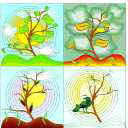
SEASON a section of the year with distinct characteristics of temperature and rainfall |

SOLAR SYSTEM the sun with the heavenly bodies that revolve around it |

SOUTH the point or direction opposite north |

STAR a self luminous nearly spherical mass of gas |

SUN the star that is the gravitational center of the solar system |

TELESCOPE an instrument for observing objects at distance either visually or by other means |
TILT
being in a slanted position |
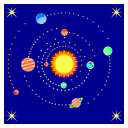
UNIVERSE the cosmos, everything that is out there |

WEST the point of the horizon where the sun sets |